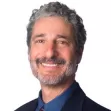Traffic Safety
Neighborhood Design Prompted Speed Hump Homicide
Grist digs deeper into the Virginia Speed Hump murder - showing how the street configuration of the suburban neighborhood may have contributed to the rage, and why it's unlikely to see more neighborhoods like it in the future.
Incorporating Health Objectives Into Transport Planning
Planning decisions often have significant indirect effects. As planners, our challenge is to clearly describe these impacts and quantify them as much as possible so they can be incorporated into decision making. An example of this is the effect that transportation planning decisions have on human health. These impacts are significant but often overlooked or undervalued in the planning process. I have worked on several research projects that explore the nexus between transport planning decisions and public health, and are developing practical tools for incorporating them into planning. Let me share some of my current thinking about this issue.
Google Sued When Map Leads Pedestrian Into Busy Intersection
A pedestrian in Park City, UT followed her downloaded Google map onto a four-lane road sans sidewalks. She was hit by a motorist before reaching the median. Lauren Rosenberg is seeking $100,000 in a federal lawsuit.
Big Dip in Traffic Fatalities
A preliminary count of all road fatalities in 2009 shows a record low figure of 33,963; almost 9% lower than 2008. The final count is due this summer. While the declining VMT due to a depressed economy was a major factor, the rate declined as well.
'Dooring' Claims Bronx Cyclist
It's yet another anecdotal reason for cyclists to bike well clear of the 'door zone' - and engineers and planners to ensure that cyclists have room to do so. Megan Charlop's bicycle ricocheted off a car door directly into the path of a city bus.
Double-Fine Zones: Do They Work?
In this op-ed, CA state Senator Leland Yee (D-SF/San Mateo) discusses the result of his legislation to apply double traffic fines, as well as city street improvements, on two of the most dangerous roads in SF, 19th and Van Ness Aves.
London's Naked Street Experiment
London is attempting to make streets safer for cyclists and motorists by turning off traffic lights in one part of the city for a short amount of time.
The Transportation Prescription
A new report identifies ways to incorporate health objectives into transportation and land use planning.
Athletes (Like Stallworth) Are Not The Only Ones Who Get Off Easy
If you watched or read the news yesterday, then you likely came across the sentencing of Donte Stallworth. Previously known (maybe) for being an NFL role player, Stallworth will serve a 30 day sentence for hitting and killing a pedestrian named Mario Reyes while driving intoxicated here in Miami Beach. The typical sentence for such an offense in Florida is 4 to 15 years. Stallworth will be released just in time for his NFL training camp. How convenient.
No Reckless Walking on the Tracks!
Officials are trying to regulate jaywalking of the residents of East Los Angeles and Boyle Heights about reckless walking and driving on the tracks.
Older Streets Are Safer Streets
Wes Marshall and Norman Garrick, after a study of data from 130,000 car crashes in California, have determined that cities built since since 1950 have more dangerous roads than those built before 1950.
Smile, You've Been Rear-Ended
A new study in Houston reveals that the number of crashes at intersections with new red-light cameras has doubled from the time before they were installed.
Rethinking Transportation Safety
A paradigm shift is changing the way we think about transportation safety. In the past, traffic safety experts evaluated risk using distance-based units (traffic crashes and casualties per 100 million vehicle-miles or billion vehicle-kilometers), which ignores increases in vehicle traffic as a risk factor, and mobility management as a safety strategy. Yet, we now have overwhelming evidence that the amount people drive has a major impact on their chance of being injured or killed in a traffic accident. Here is a small portion of the evidence:
Traffic Signs Driving Us to Distraction
Traffic signs on American roadways are so numerous and so distracting to drivers that they are having the opposite effect intended, writes John Staddon.
Traffic Crashes Cost Twice as Much as Congestion
A traffic safety study released March 5 by the AAA highlights the enormous costs of traffic crashes, in terms of lives and dollars, to the U.S. The cost exceeds that of congestion while deaths amount to 117 daily.
Smart Growth Safety Benefits
Many families move to sprawled, automobile-dependent suburbs because they want a safe place to raise their children. They are mistaken. A smart growth community is actually a much safer and healthier place to live overall.
Pagination
- First page
- Previous page
- …
- 29
- 30
- 31
- 32
- 33
- 34
- 35
- 36
- 37
Placer County
City of Morganton
HUD's Office of Policy Development and Research
Dongguan Binhaiwan Bay Area Management Committee
City of Waukesha, WI
Los Angeles County Metropolitan Transportation Authority
Indiana Borough
Urban Design for Planners 1: Software Tools
This six-course series explores essential urban design concepts using open source software and equips planners with the tools they need to participate fully in the urban design process.
Planning for Universal Design
Learn the tools for implementing Universal Design in planning regulations.










